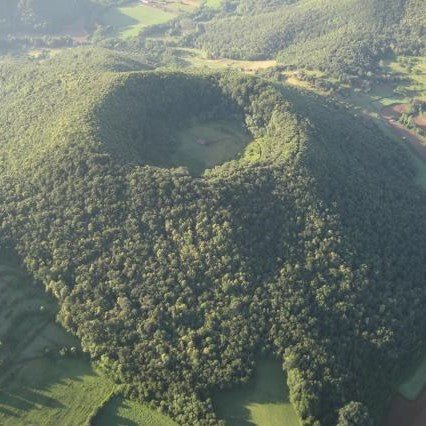
Magnificent chapels placed on the tops of cliffs and mountains come as no surprise to Catholics nowadays. But have you ever heard about a chapel built in a ... volcano?
The chapel of Santa Margarida in Catalonia, Spain, dates from the 15th century, and is situated in a crater of an extinct volcano. An earthquake destroyed the chapel but it was rebuilt in the Romanesque style in 1865. In what was originally a lava crater, the single-nave chapel is now heaped among grasses and plants. The former volcano's walls may be seen all around, as well as deciduous trees.
It's not easy to get to the chapel. You must hike up a difficult hill from the nearby village of Saint Pau. The climb to the top of the nearly 700-meter-high volcano takes roughly 25 minutes. Except on the feast day of July 20, there are generally no services held in the chapel. St Margaret of Antioch, the patron saint of pregnant women, is commemorated on that day. Hundreds of the faithful go there to participate in Mass and celebrations.

According to a legend, the fact that St Margaret of Antioch's memory is commemorated in a chapel on a volcano, is no coincidence. The saint lived at the turn of third and fourth centuries in Antioch, located in modern-day Turkey. She was imprisoned for refusing to marry a Roman general and surrender her beliefs. As per tradition, the devil in the form of a dragon appeared to the imprisoned Margaret. The dragon swallowed the woman, but miraculously she managed to escape. The monster's stomach was cut open and Margaret emerged unharmed. The chapel was built inside the volcano to shield the faithful from devil fire, according to a cultural scholar quoted in Smithsonian magazine.
Locals may now relax, knowing that they are not in danger of a fire or a volcanic eruption. This section of the volcanic complex, known as the La Garrotxa zone, last erupted 10,000 years ago.

